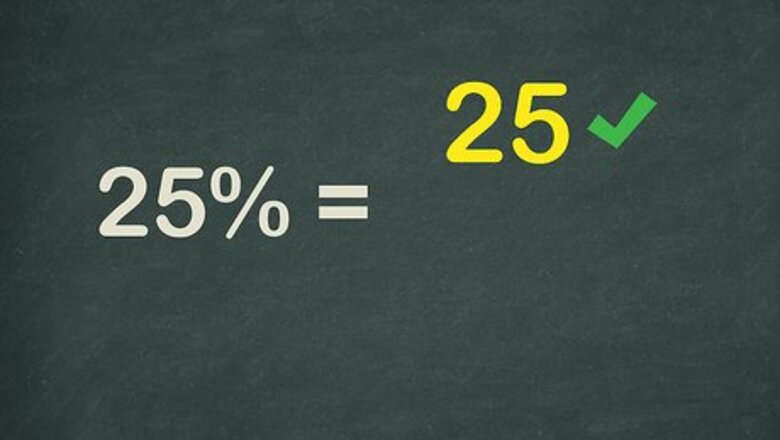
views
Using 100 as Your Denominator
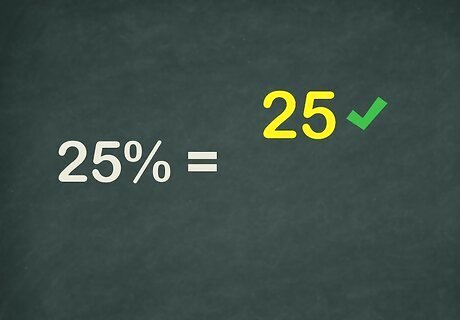
Remove the percentage mark (%) from the value you want to convert. Write the number on your paper by itself, no percentage symbol needed. If your percentage is 25% then just remove the % and write “25.”
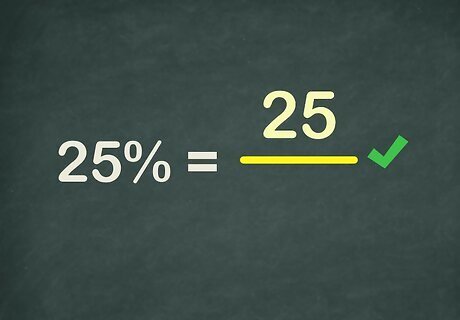
Draw a line underneath your number, or a diagonal line to the right of it. This line separates your top number, or numerator, from the bottom number, or denominator. The number you began with is your numerator and sits on top of the line. If you began with 25%, you should write “25/”
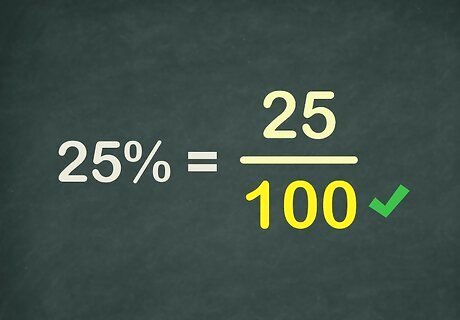
Write “100” below the line. Like a percentage, a fraction is helpful for writing amounts that are smaller than the whole. When you write 100 as the denominator, you are saying that you have a certain number out of a possible 100. This is your fraction, in an un-simplified form called a “decimal fraction.” When converting a percentage to a fraction, the denominator is always 100, and the number you started with is always the numerator. If you began with 25%, you should now have written “25/100.”
Writing a Simplified Fraction
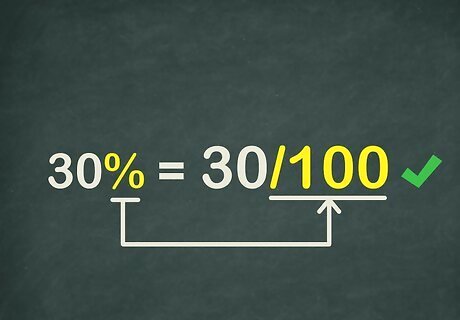
Replace the % in your number with “/100.” The % symbol is really just a shorthand way of writing a fraction in which the bottom number is always 100. So, if you have 32%, you can write it as 32/100 and it will mean the same thing. Once it is written as a fraction, you may be able to simplify it into a more manageable number.
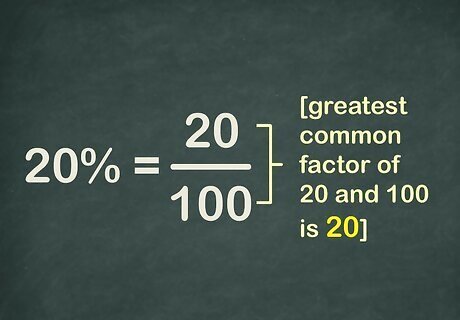
Determine the greatest common factor. The largest number that you can divide into both your numerator and your denominator, exactly, is called the greatest common factor. To find it, list out the numbers that you can divide into your numerator and denominator. Look for the largest number that the two lists have in common and this will be your greatest common factor. For example in the case of 20/100, 20 has the following factors: 1, 2, 4, 5, 10, 20. 100 has the following factors: 1, 2, 4, 5, 10, 20, 25, 50, 100. The largest number that appears in both lists is 20, so 20 is the greatest common factor.
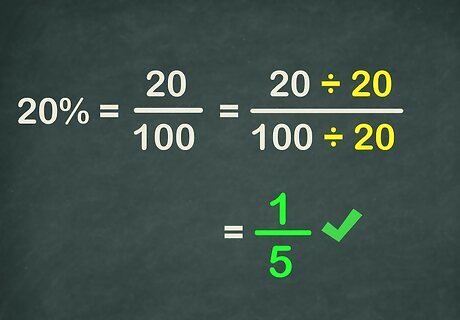
Divide the top and bottom by the greatest common factor. Divide the numerator by the greatest common factor. Write your answer down as your new, simplified numerator. Next divide the denominator by your greatest common factor. Write your answer down as your new, simplified denominator. This is your fraction in its reduced form. For example, let’s begin with 20/100. The greatest common factor is 20. 20 divided by 20 equals 1 and 100 divided by 20 equals 5. When written out in fraction form, our simplified answer is 1/5.
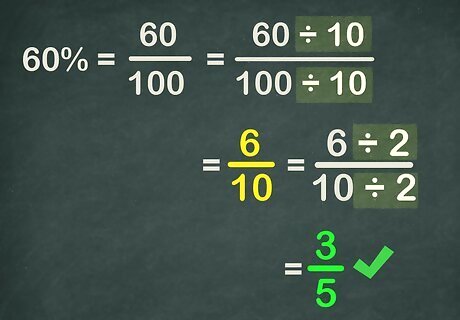
Check to make sure the greatest common factor is correct. If you did not accurately identify the greatest common factor, then you will be able to reduce your numbers even further. Take, for example, 60% and convert this to 60/100. You might think that the largest common factor for these numbers is 10, which will leave you with 6/10. However, 6 and 10 share a common factor of 2, which means it can actually be reduced even further, to 3/5. If you end up with a decimal point in your fraction, then you’ve chosen a common factor that is too large for one of your numbers. Work backwards to find a smaller number that goes in an exact number of times for both the numerator and the denominator.
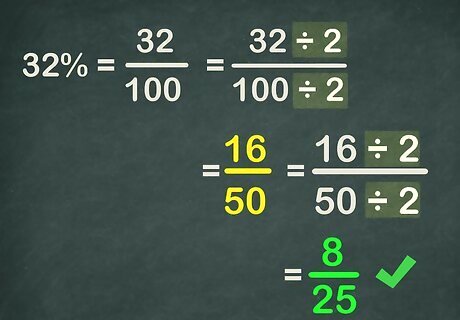
Divide by the lowest common factor of 2 or more if you are stuck. This alternative approach to the greatest common factor has you start small. Divide the top and bottom by the smallest common numbers until they can no longer be divided. This will give you a simplified fraction. For example, take 32%, or 32/100. If you divide 32 and 100 each by 2, you get 16/50. If you divide the top and bottom by 2 again, you get 8/25. You can no longer divide these numbers by a common factor, so 8/25 is the simplest form of your fraction.



















Comments
0 comment